JVC DLA NX-7 with 3.10 Auto Tone Mapping
JVC’s new firmware 3.10 is a huge improvement in HDR performance in our opinion. We were very excited to have Kris Deering, a professional calibrator from Deep Dive AV (http://www.deepdiveav.com), calibrate our DLA-NX7 to a near-perfect technical calibration. In the “Frame Adaptive” HDR menu it is possible to fine tune the tone mapping in the “Auto, Low, Middle, or High” settings. We started in “Auto” which Kris explained was the same as “Middle” but some scenes were also shown in “High” to give added pop.
JVC has long been recognized as one of the leaders in home theater contrast and deep black levels (which help give an image the best possible depth and realism). In 4K those levels are an even more important factor considering HDR and the wide range of tone values now available to be displayed. JVC uses three D-ILA reflective LCOS type imaging chips, one each for red, green, and blue. The DLA-NX7 ($8,999) adds two significant capabilities to the lower cost ($5,999) DLA-NX5 that, in our opinion, are very significant. The first is a cinema filter which allows for DCI P3 wide color gamut, and the second is having two variable apertures or iris controls. This allows for improving black levels both dynamically as well as improving contrast by setting a fixed iris to the desired brightness level and then engaging the auto iris to assist in low and very low light scenes. Both are significant improvements in final image quality.
Both the DLA-NX5 and DLA-NX7 are lamp-based projectors. That means JVC is able to help keep the costs under control, but it also means there can be some level of loss of brightness, color accuracy, and of course, eventually the need for a replacement lamp – which can get rather expensive. However, depending on usage and hours the need to replace the lamp might not be necessary until after several years. As indicated in our previous Theo comparison charts, the JVC DLA-NX7 is at or near the very best projector under $10K, and with the improvement in HDR in this upgrade will be rated even higher now. It is because of this “Near Reference” quality that we wanted to make this comparison. This is not and was never meant to be a projector shootout, as the JVC is in a class of projector and capabilities that currently no one in our opinion can surpass. It is, however, very helpful to know where the new Theo-Z65 Lite is in terms of 4K image detail, wide color gamut, contrast, deep blacks, and HDR performance. That is why we do these comparisons.
Theo-Z65 Lite with C17 firmware
The TVS Pro Theo-Z65 Lite is a modified Optoma UHZ65 laser 4K projector. The original Optoma UHZ65 is a very good 4K projector with all the advantages of laser stability and long life, but we felt we could add to its image quality and, over the course of about a year and a half, have been able to achieve our objectives. All Theo-Z65 Lite projectors ship with firmware C17 which adds 3D HD Blu-ray capability. We were able to improve the performance of the unmodified projector in three ways:
1. Ultra Wide Color Gamut
By developing a three band interference filter with a top US optical company we were able to utilize the wider color output of the laser with the increased spectrum output of the cinema filter (PureChrome™) for a ultra wide color gamut extending far beyond P3. The filter is produced on an over 1 million dollar sputtering machine so that the result is a filter capable of sustaining over 900 degrees. Most traditional photo filters are simply coated filters and are not capable of high temperatures or ultra long life. Since our color extends beyond the traditional P3 gamut we give our customers the option in the menus of selecting just P3 (technically accurate) or the more dramatic Ultra Wide Color which adds the additional pop and vibrancy you see in the comparisons.
2. Improved Black Levels
By reducing the amount of reflected light inside the light engine we were able to improve the low level blacks in addition to what the cinema filter was able to do (by the fact that it also improved blacks by reducing the total output). For most home theaters a screen size from 90″ to 130″ is utilized and it is with this size range in mind we were able to keep great HDR performance and reduce the black levels for great low level scenes.
3. Modified Tone Mapping
It became obvious to us that good HDR tone mapping should begin with good mid-range brightness. After seeing many manufacturers including Epson, Sony, and now JVC, come out with new and improved brighter ways of doing HDR tone mapping, we felt the Optoma could also use some improvements. By increasing the mid-range tonal values, skin tones in particular look brighter and more vibrant. We incorporated these improvements in the original Theo-Z65 and have kept them in this new Theo-Z65 Lite version as well. Since most scenes in movies are above 10% IRE, and only the rare highlights go above 90%, this method has proven to be a hit with our customers. With these differences in mind lets see how it compares to the JVC DLA-NX7.
4K Image Sharpness and Resolution
The never ending debate as to if the DLP .66″ chip by Texas Instruments as used in the Optoma UHZ65 and Theo-Z65 Lite can equal the visual detail of the three .67″ is always a hotly discussed image quality issue. The reality is that even the 17 element all-glass lens used on the JVC cannot exceed the visual detail and sharpness of the DLP single chip design when properly set up and calibrated. The JVC was pixel aligned by Kris as part of his calibration process, which did help in terms of any color edging of the three chip alignment. It did look very good, in fact better than we have ever seen from the JVC. When it came to detail comparisons they both did an incredible job as you can see in the close ups we took of each.
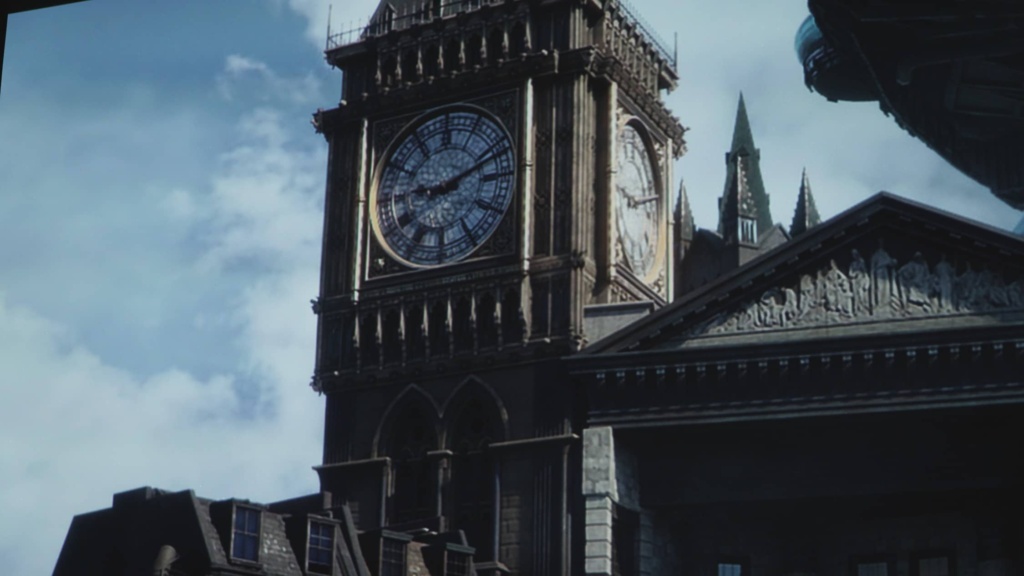
Close up of JVC DLA-NX-7. If you look closely you will notice more details in color calibration and tone mapping than you will see in any detail differences. Click or right click and select ‘open image in new tab’ to see higher res version. Look closely at the fine railings near the top of the tower.
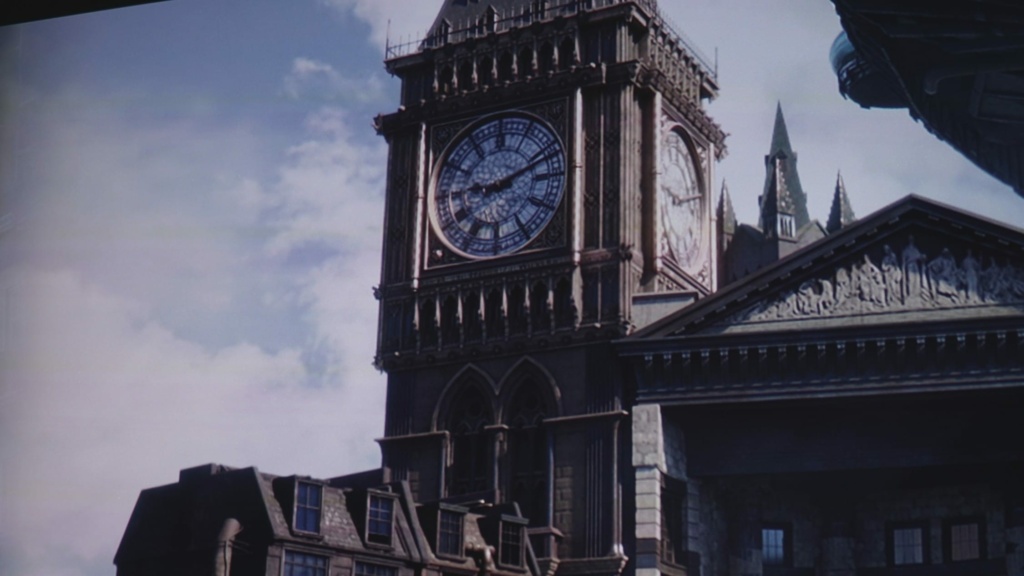
lose up of Theo-Z65 Lite. Look closely at the fine railings near the top of the tower. Click or right click and select ‘open image in new tab’ to see higher res version.
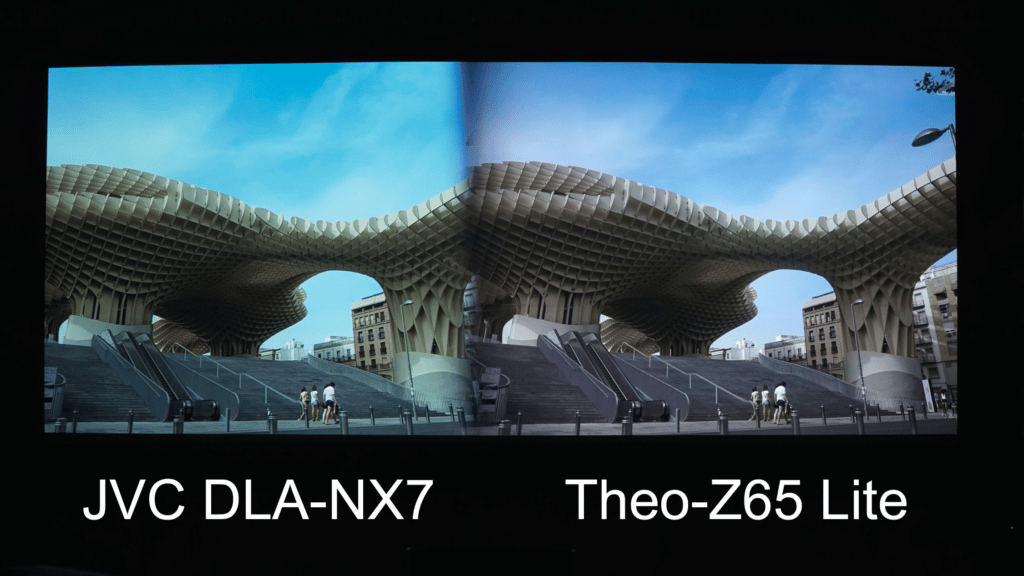
This freeze frame from a 4K video demo file is very good for testing fine 4K detail, resolution and sharpness Non-HDR 4K, non-calibrated.
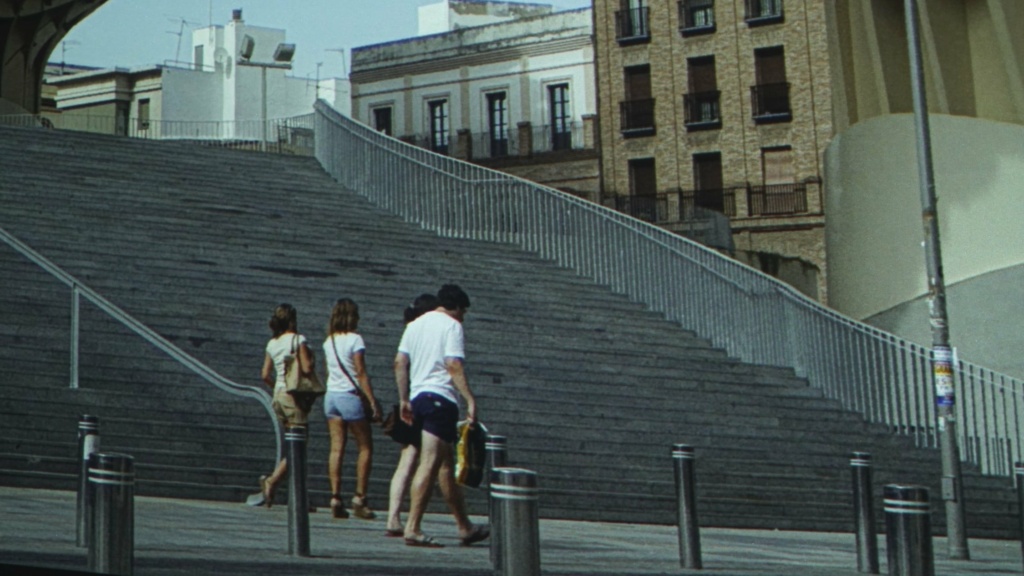
JVC DLA NX-7 close up, again ignore the color differences (some by camera capture) and compare the fine railings and top stairs for fine details. Click or right click and select ‘open image in new tab’ to see higher res version.
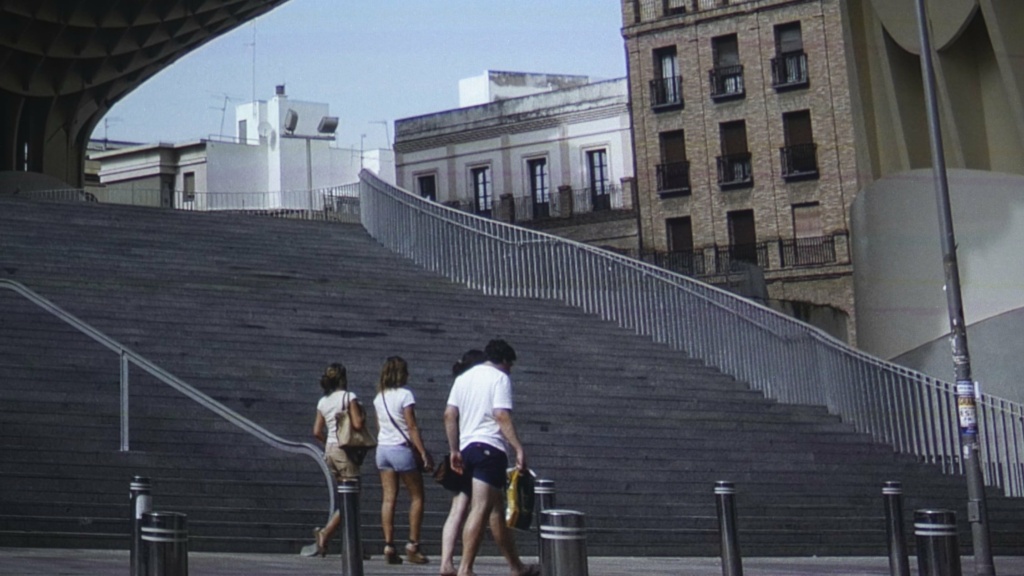
Theo-Z65 Lite closeup showing very fine detail in the top center. If you look close at the area near the top center you will see very fine railings in the balconies of the buildings. Click or right click and select ‘open image in new tab’ to see higher res version.
In terms of fine detail and sharpness, few images from 4K content have as many fine details overall as does this image from this 4K UHD demo material we have had for a few years. Like the “stairs” images above, this is not HDR 4K so the JVC is not color calibrated for 4K non-HDR, and the camera usually shows more differences (as far as color balance is concerned) than what the eye sees in person.
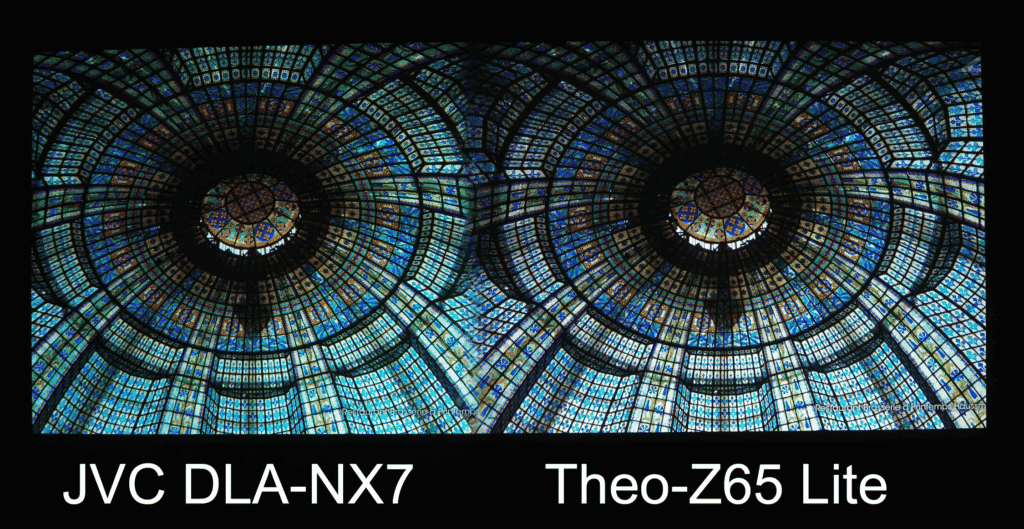
Side-by-side of very fine stained glass inside a chapel from a freeze frame of 4K UHD demo footage. Click or right click and select ‘open image in new tab’ to see higher res version.
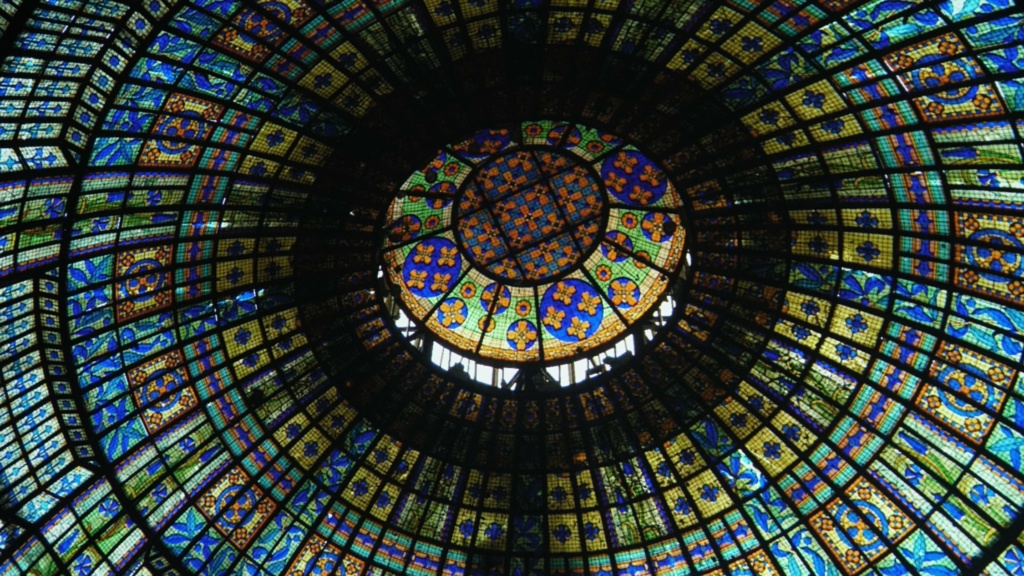
JVC DLA NX-7 close-up showing differences in lenses, 3 chip alignment and native full 4K imaging chips. Click or right click and select ‘open image in new tab’ to see higher res version.
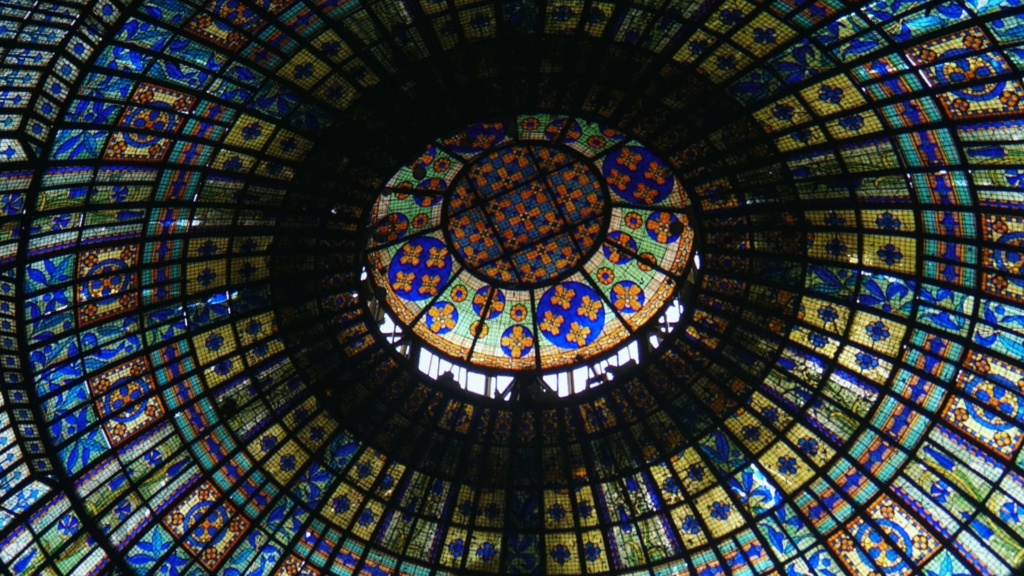
Close up of Theo-Z65 Lite. Click or right click and select ‘open image in new tab’ to see higher res version.
Below is the unedited, recorded live clip of Kris Deering and Ted discussing this comparison.
HDR Color, Calibration, and Wide Gamut
We wanted wider color and more dynamic images than current projectors so we created the Theo-Z65 Lite. We liked the detail and laser of the unmodified Optoma UHZ65, but we had seen and wanted those deep, deep reds, blues, and greens that we had seen on some other laser-based projectors, and also wanted better blacks. Those other projectors were very expensive. We had considered adding a conventional cinema filter, but those were mostly designed for lamp-based projectors and we wanted a filter tuned to the laser of the Optoma. It’s now been over a year and we are very excited to compare the results to the latest version of the JVC DLA-NX7 – which is considered by many to be a near-reference quality home theater projector when properly calibrated and set up.
JVC Calibration By Kris Deering of Deep Dive AV
When it comes to color and technical calibration, Kris is one of the most experienced and well respected calibrators in the market. Kris was able to take our JVC, with the new 3.10 firmware, and bring the color, contrast, HDR, and detail to it’s best that we have ever seen it. We really appreciate Kris working us into his schedule – and the improvements he made were significant.
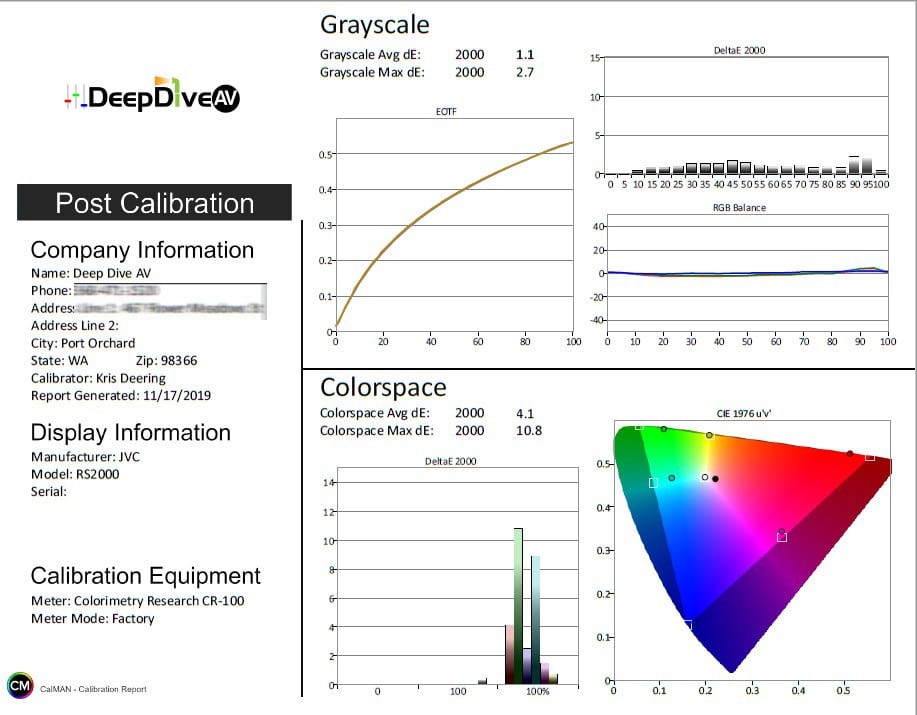
As can be seen above, Kris was able to bring this JVC DLA-NX7 into near-reference quality calibration.
P3 Color Gamut Inside BT2020 Color Gamut
Most major HDR 4K UHD movies are color graded to P3 inside of the BT2020 so that the new displays and projectors, which have wide color gamuts, can properly display the colors as they were intended to be seen. Since we do not want to alter or modify the original intent of the director, it is very important to get these P3 colors correct. Here, Kris did his magic and hit almost every target for the JVC calibration.
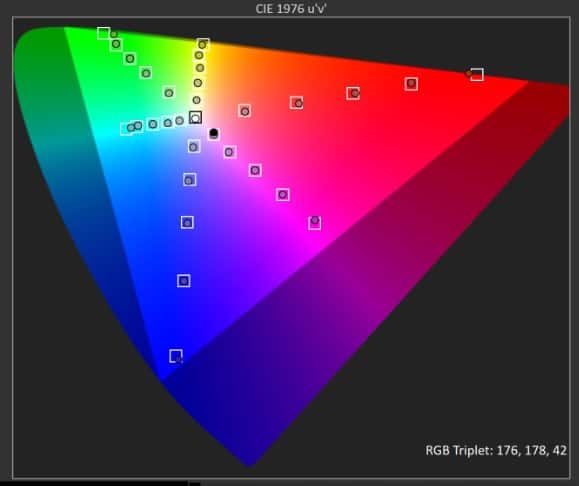
Notice how accurately Kris was able to calibrate the 50% amplitude targets of P3 color inside of the full BT2020 color gamut.
Theo-Z65 Lite Color Calibration
TVS Pro calibrates the Theo-Z65 Lite before each one leaves our facility. We purposely did not want Kris to calibrate it for two very good reasons. The first is that most customers who purchase projectors under $5,000 do not usually have them professionally calibrated due to the additional costs and time involved. We wanted to let potential customers see the Theo-Z65 Lite as it would appear right out of the box as they would receive it. We also knew that we are doing tone mapping and extended color gamut beyond P3 in ways we have not seen done before due to the limited color gamuts up until now. We do follow the P3 inside of BT2020 color levels, black levels, grey scale linearity and other basic calibration procedures. This before-and-after of our calibration, as measured by Kris, will give you an idea of our calibration.
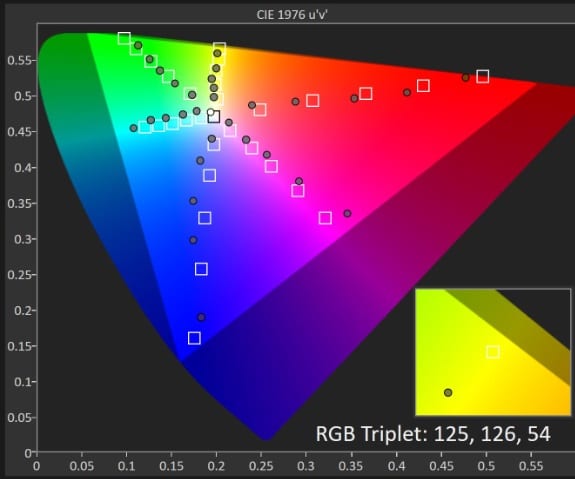
AFTER: Theo-Z65 P3 50% amplitude targets as calibrated by TVS Pro ready to ship, also measured by Kris.
It is important to get these colors on the P3 axis, otherwise the colors will not be accurate. The reason we do not make these calibrations even more accurate is for two reasons. One is the cost associated with the more technical calibration, and two is brightness. We have seen too many manufacturers give up HDR brightness, only to then go back and modify or redo their original tone mapping because customers wanted brighter HDR images. We are able to go beyond P3 color and produce more vivid colors than most HDR projectors under $10,000, and we are not willing to give up all of that extra wide color gamut to make that technical calibration more perfect. We call it a balanced calibration in that we are trying to balance color, brightness, and wide color. We also give the Theo user a choice if he or she so desires to use a more conservative color gamut, which we have also calibrated to the more conservative P3 standards.
P3 Color Gamut and Extra Wide Color Gamut
P3 color gamut falls between the HDTV color standard, called REC 709, and the new goal of modern displays of BT2020 color. Currently, most displays under $100,000 cannot do BT2020 color. BT2020 represents almost 90% of the natural colors the human eye can perceive as confirmed by the Painters Color Gamut, which is even wider than BT2020. Our original goal was to achieve P3 color with our modifications, but when we found we could go clear out to 80% of BT2020 we were very excited. Since we have enjoyed the wider and more purified colors of these modifications, we wanted to take advantage of as much of it as we can. Once we go outside of P3 color our targets do not exist yet. This is why we calibrate inside of the P3 gamut to P3 and then outside we do as wide of color as it allows us to do.
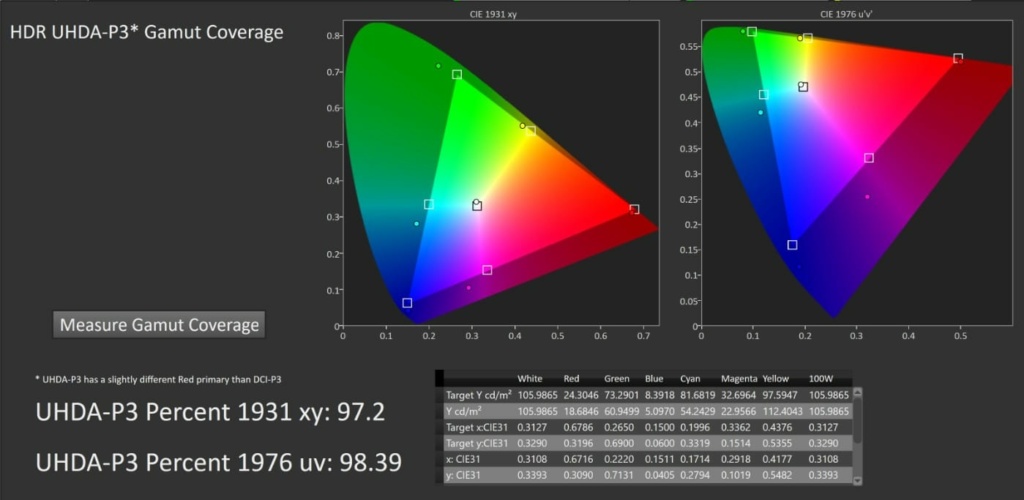
Theo-Z65 Lite color gamut, at 100% amplitude, as measured by Kris Deering. Notice the expanded red, green, blue, cyan, and magenta outside the normal P3 color triangle.
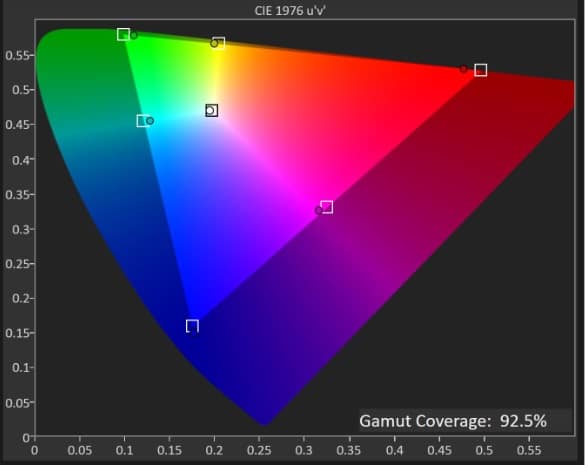
P3 Color Gamut and Extra Wide Color Gamut on JVC DLA-NX7
JVC DLA NX-7 after calibration, at 100% amplitude, and measured by Kris. Note that only the blue is outside of P3 color gamut.
Technical HDR Calibration vs. Balanced HDR Calibration
There are two very different thought processes going on between these two calibrations. It is important to keep two things in mind, however, when it comes to HDR capabilities in projectors.
1. There are no current standards when it comes to HDR implementation in projectors. Each manufacturer can choose to implement and display 4K UHD HDR content in their own way. That is one of the reasons you have seen so much change in the last couple of years.
2. There are currently no BT2020 color-graded movies on 4K UHD that we are aware of. That is the reason Hollywood is grading to P3, inside of BT2020, because at least we know in the calibration world what P3 inside of BT2020 should look like.
The Technical Calibration:
Everything that ISF and respected calibrators like Kris Deering stand for is for dead on, or as close as possible to dead on, calibration accuracy – of P3 within BT2020. They do not want color to go beyond the defined targets and they want you to get as much as possible from your display as the director intended from what he saw on a technically calibrated monitor.
TVS Pro Balanced Calibration:
With our background and experience in the motion picture industry (we are a Red Camera, Sony CineAlta, and Canon Cinema dealer) we knew about and have been shooting in very wide color gamut (even beyond BT2020) for at least the last 8 years. We also knew that most current displays cannot even do 100% of P3 color. When we measured and saw what color beyond P3 looks like we wanted to share that with other enthusiasts of ultra wide color – even though it is outside of normal calibration and what the director is currently limited to with P3 inside of BT2020 (whether or not they want wider color).
We also knew that there may be situations when wide color is not appropriate. So for HD calibration settings in each Theo projector, we give a balanced calibration for REC 709, Cinema (P3), and HDR (Ultra Wide Color). As Kris points out in the video, unlike JVC, our filter does not move out of the way for REC 709 color so even in our REC 709, which is the HD standard, our color does extend slightly beyond the 709 targets as shown below.
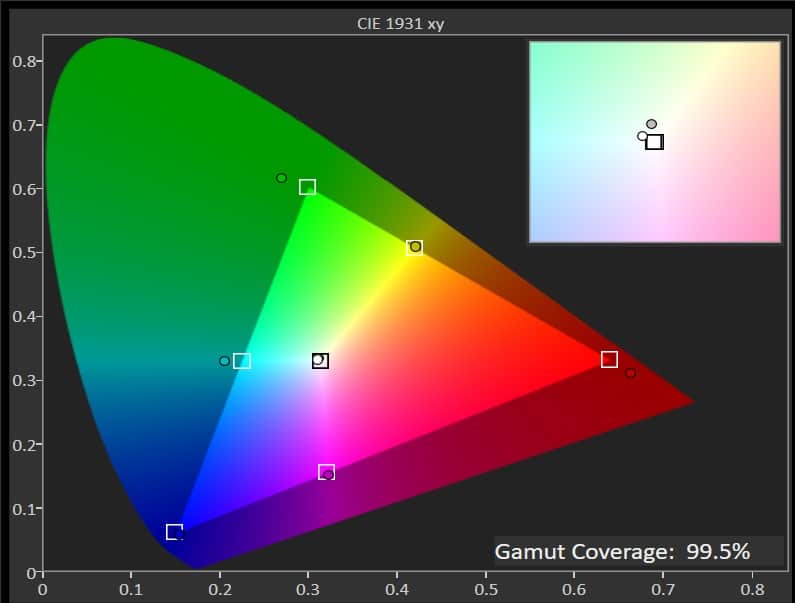
REC 709 calibration of Theo-Z65 Lite. Note: Even though we have dialed down the color as far as possible with the filter in place we still exceed the targets. This does give deeper reds, greens, and cyans that the director (because of REC 709 limitations) did not see or intend.
Below is the SDR color technical calibration that Kris did on the JVC with the filter moved out of place. As you can see, it appears that the red, magenta, and blue are somewhat exceeding the REC 709 color (although not as much as we exceed it with the Theo). This also explains why they lose less light with their cinema filter, because their filter is not providing as much of an expansion of color as we are.
So, what does all this mean?
Color (if color levels, black levels, and 50% amplitudes are on target) can be a dramatic and vibrant enhancement to the motion picture experience. We have chosen to go beyond the current P3 inside of BT2020 whereas a technical calibration does not. As Kris mentions, the video does not show you exactly what we see in person but at least can give you an idea. We always invite people to our demo room to see for themselves. Lets take a look at some examples:
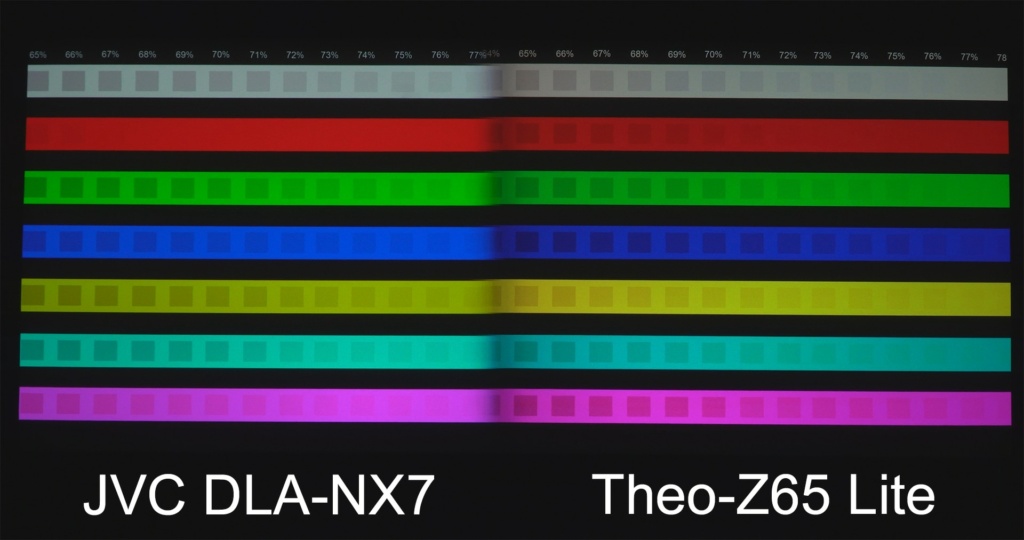
Side by side color level and clipping signal from the HDR-10 calibration disc. If color levels are too high the clipping squares will disappear. Neither projector has the color set too high.
If you are able to view these images on a wide color display you will notice that even in the above image that the reds, cyans, greens, and magentas are quite different. That is because of the differences in the color filters and calibration.
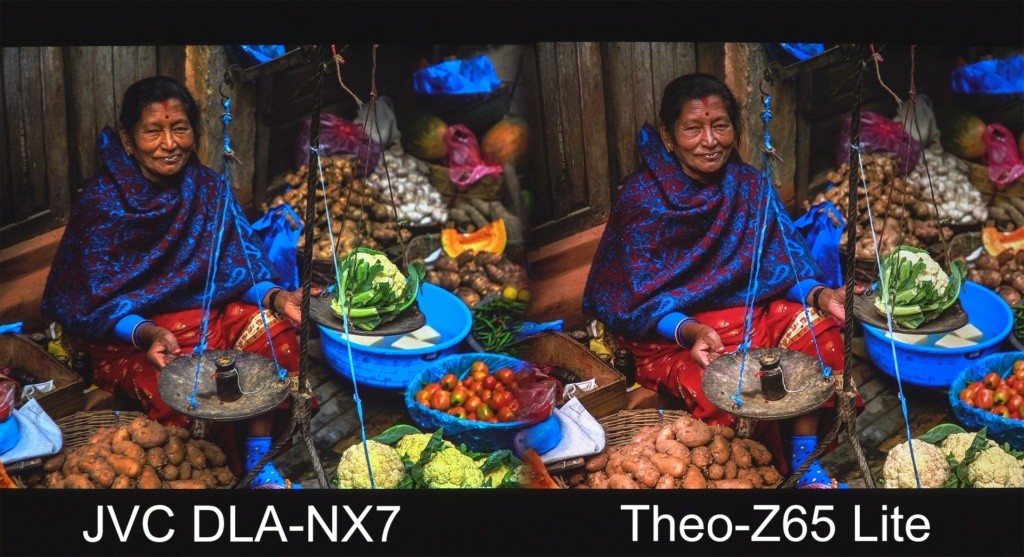
Calibration HDR test image also from the HDR-10 calibration disc from Diversified Video. JVC DLA-NX7 is in its Auto mode for Adaptive tone mapping. The Theo-Z65 Lite is in its standard static mode as shipped.
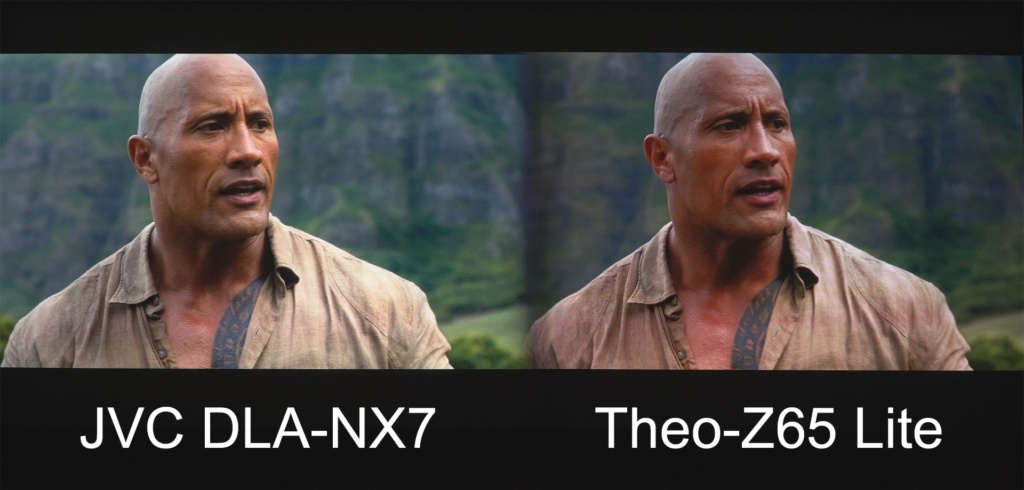
JVC now manually put in “High” mode of tone mapping. Theo still in standard. As can be seen, tone mapping can be a very subjective matter as there are no set standards yet for projectors. We could have also moved the Theo-Z65 Lite to its “Bright” HDR tone mapping settings but at that level you could see some additional clipping of detail in the highlights.
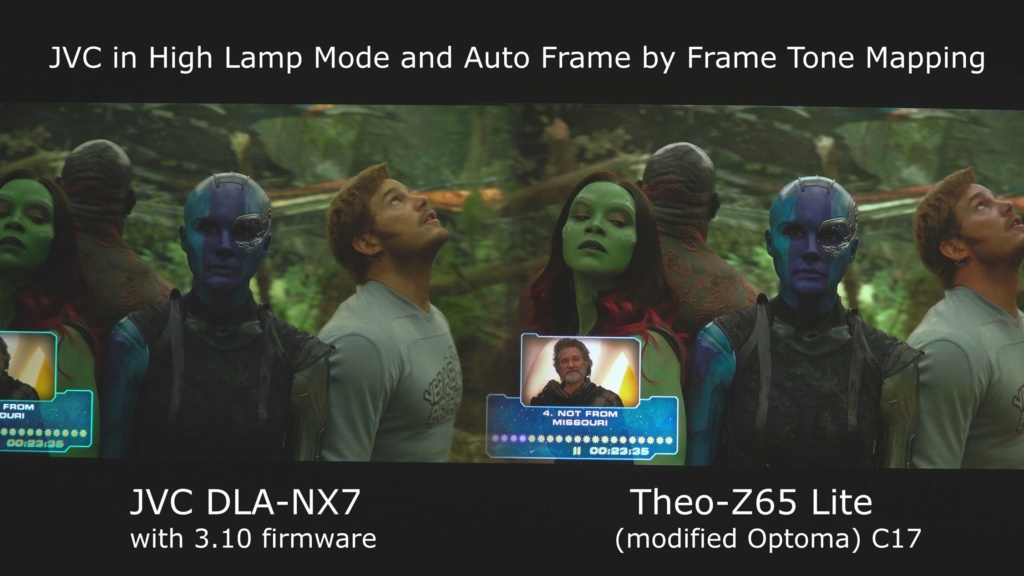
Image from Guardians of the Galaxy II as captured by the 4K video capture. Notice highlight clipping in the chapter image. The camera and the 4K codec compression cannot show all that we see in person.
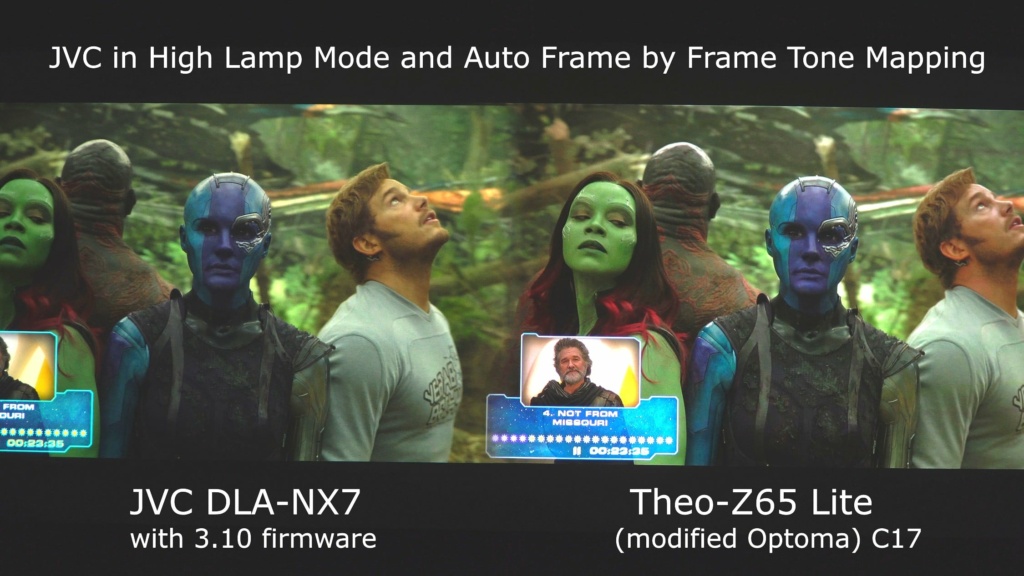
Same image as above but with additional electronic amplification so you can see the color differences better. The extreme highlight clipping is due to our adding gain to the entire image and not the projectors in this image. The skin tones are now more like what we saw in person only without the clipping we introduced here. Again, best viewed on a wide color display.
Wide Color, Expanded Color, Ultra Wide Color
We ran out of time in the video but wanted to show here, as best we can, some of the color differences between the JVC DLA-NX7 with its wide P3 color, the unmodified Optoma UHZ65 with its slightly expanded color, and the Theo-Z65 Lite with its ultra wide color gamut. Even though most of the real differences are lost in compression and display limitations, you can see some differences if you look closely on a wide gamut display.
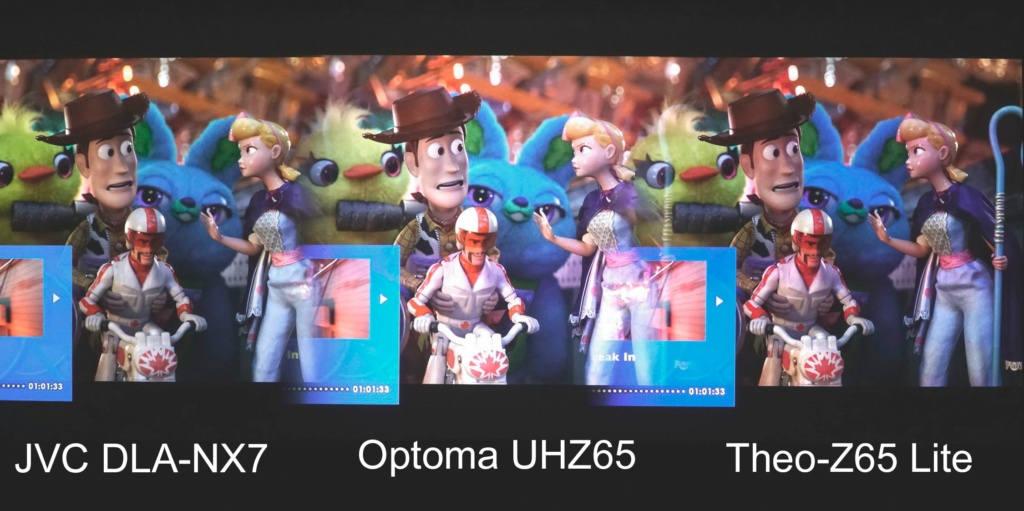
Notice the differences in the three very different reds on the helmet and Canadian leaf: the JVC is red, the Optoma is orange-red, and the Theo is deep deep red. Notice similar differences in the skin tones, the yellow duck and blue bear. All three projectors were peak brightness matched for this image.
What is really amazing to us is how close, for most scenes, the JVC DLA-NX7 and the Theo-Z65 Lite are in terms of color, contrast, and detail. When you consider that two projectors could hardly be further apart in terms of technology (3 chip vs 1 chip, lamp vs lazer) it is amazing to us to see this live.

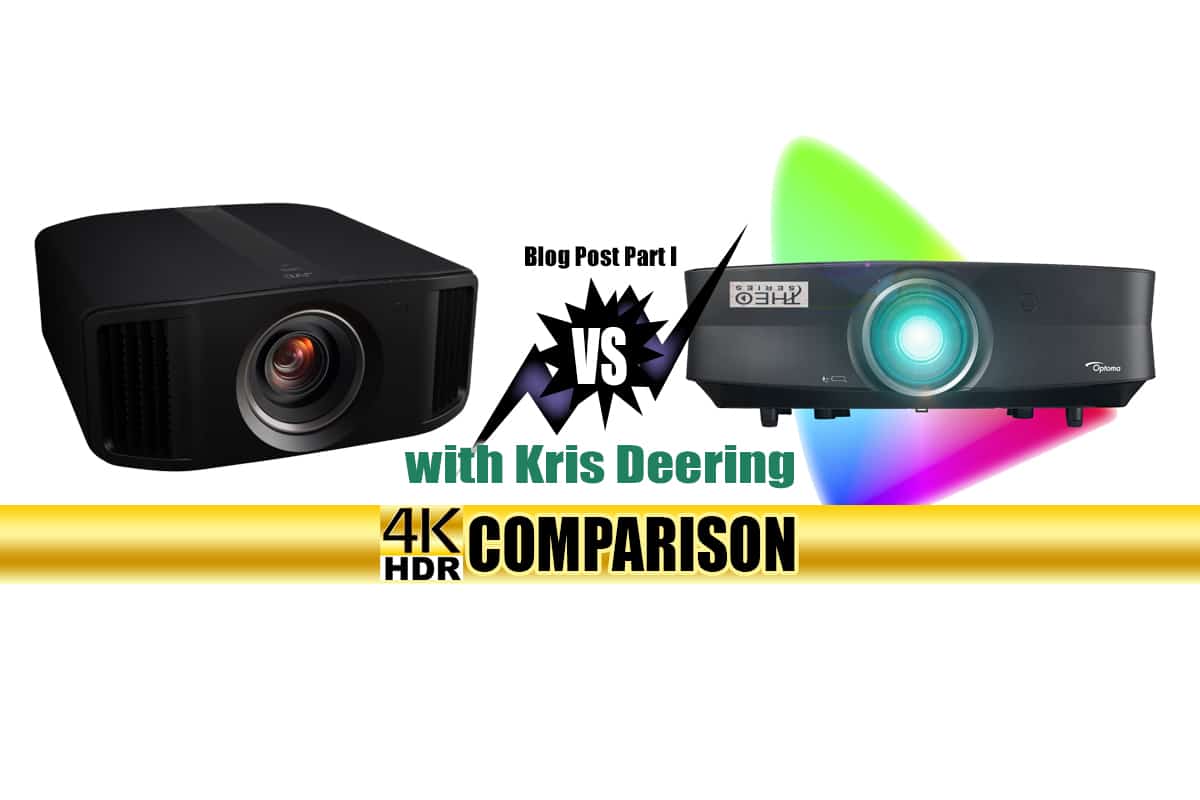
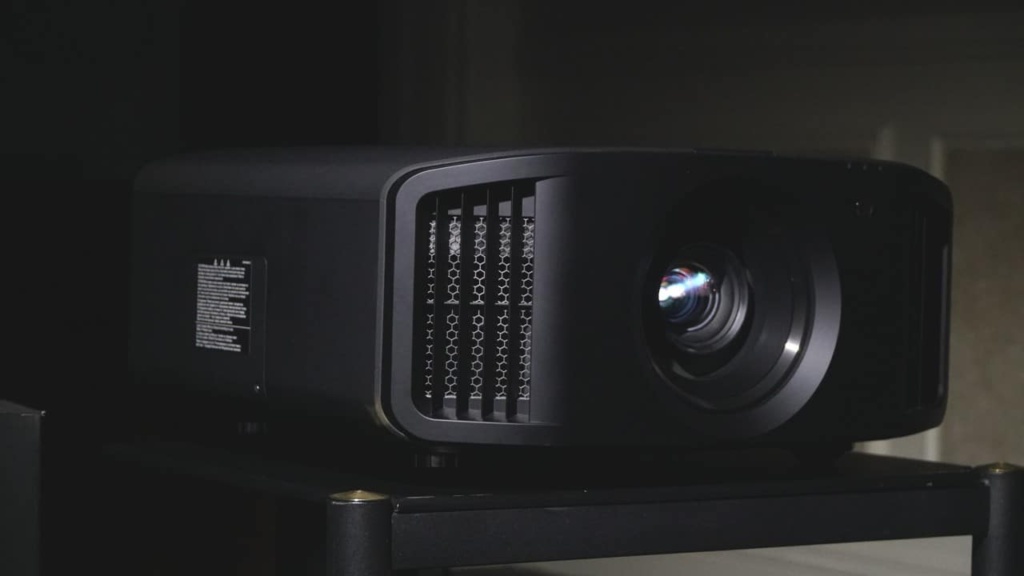
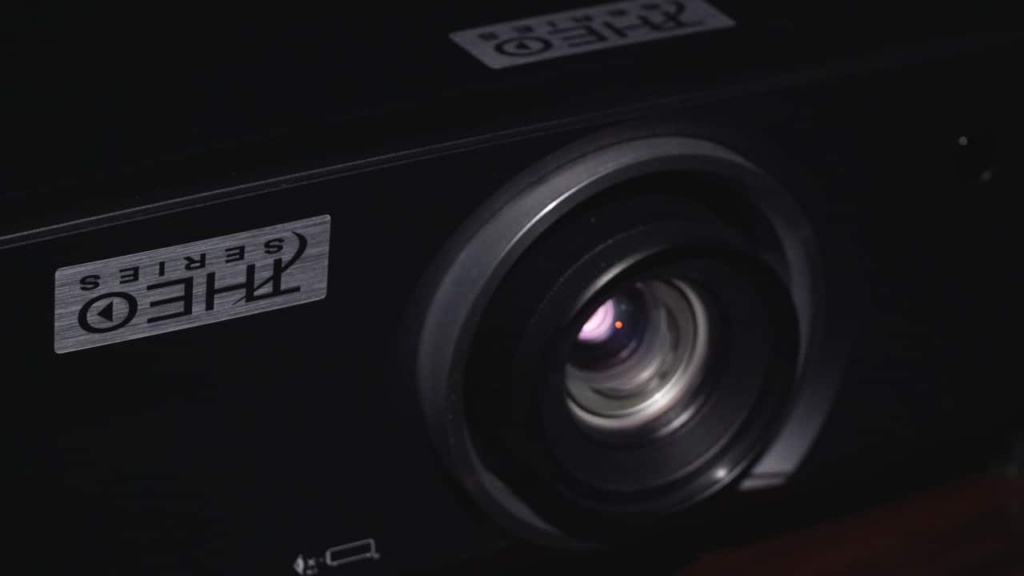
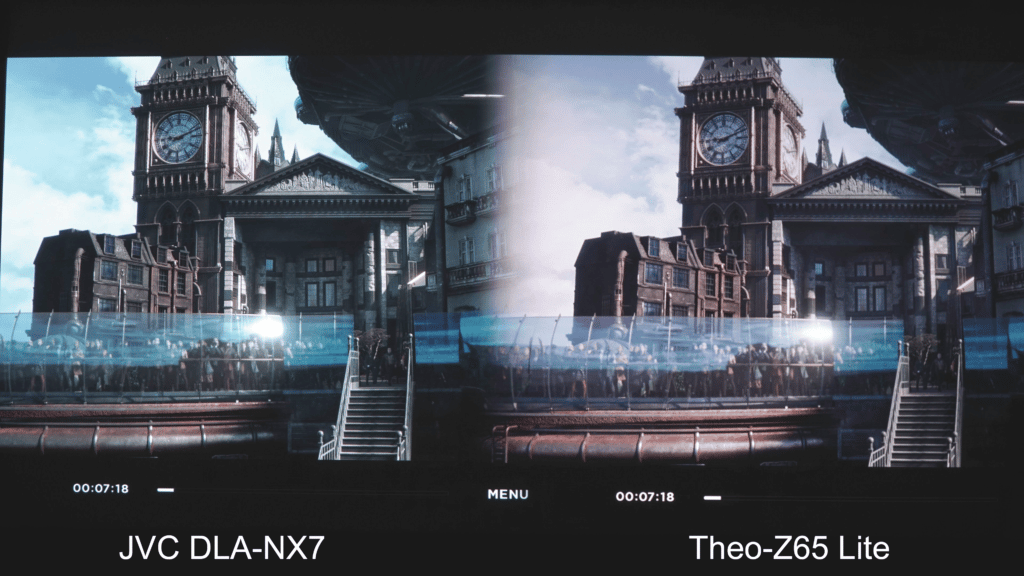
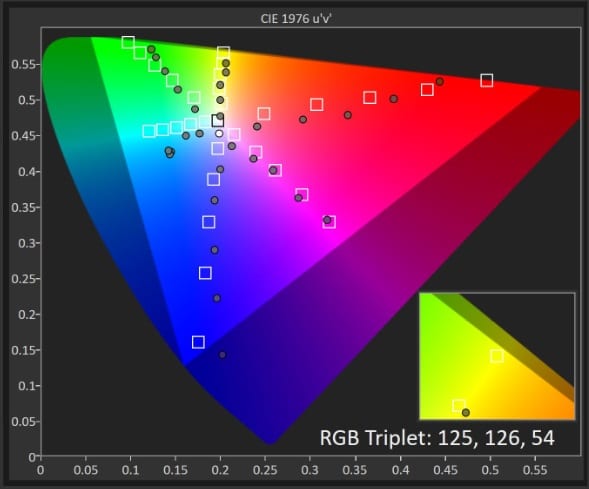
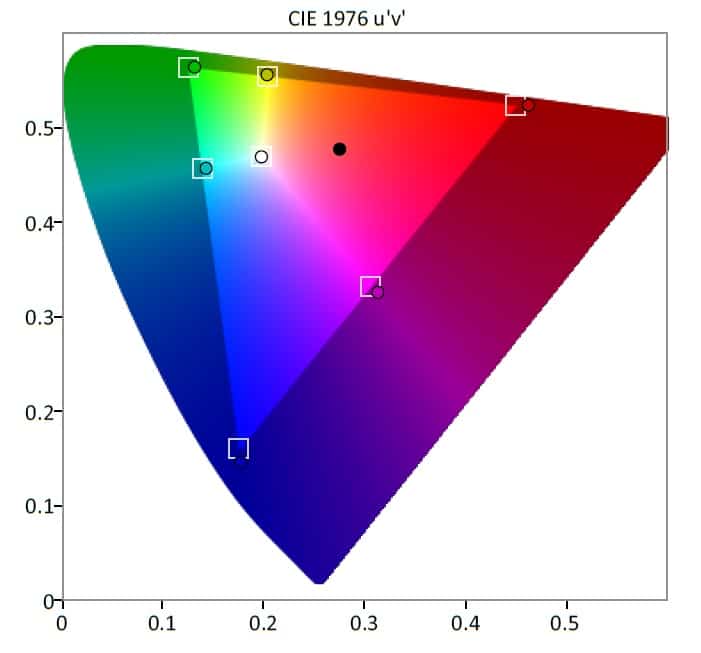
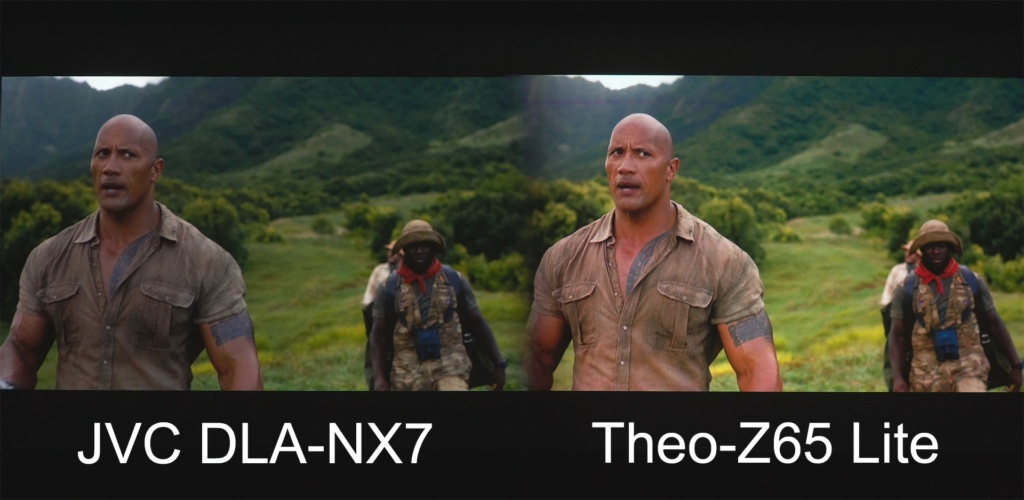
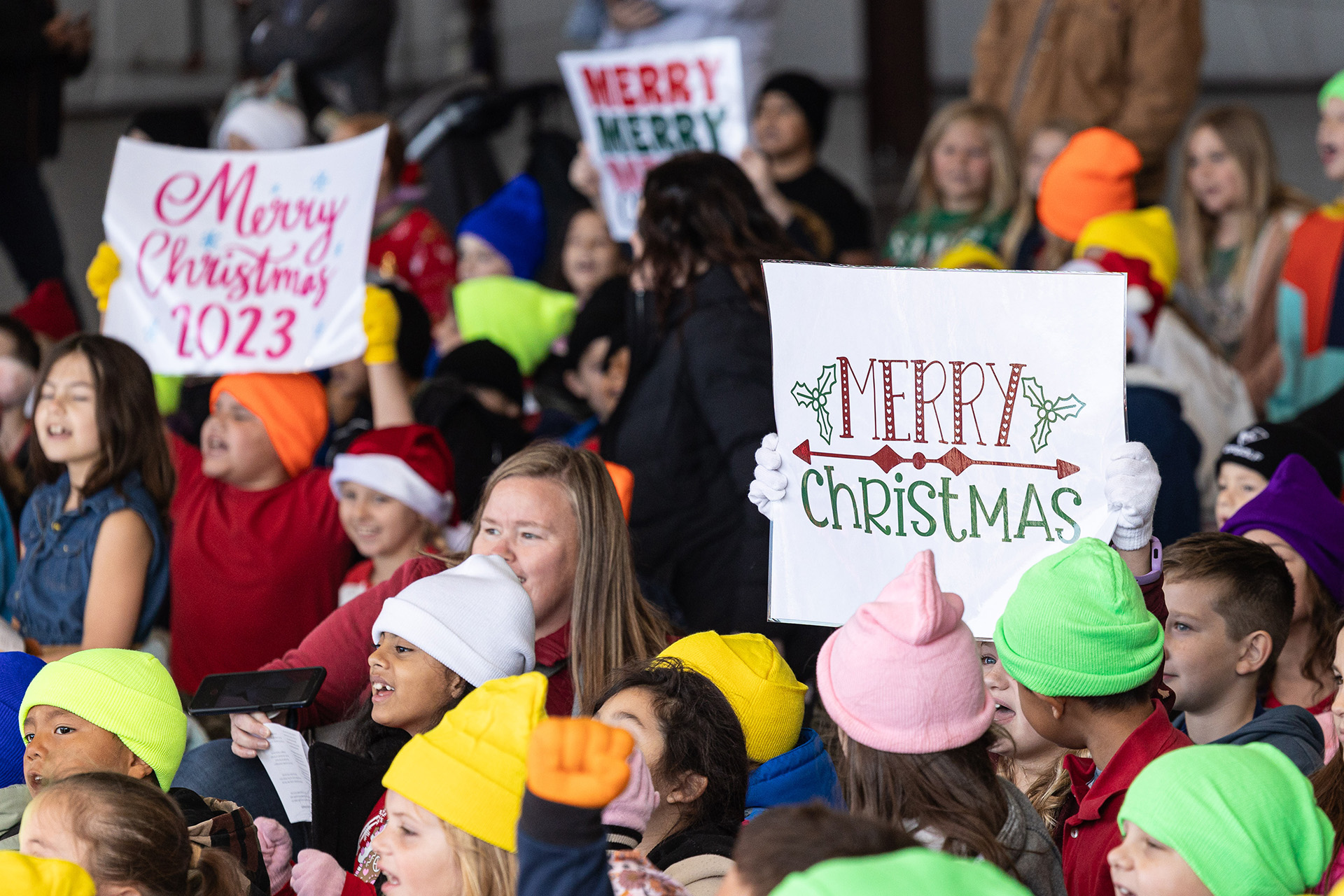
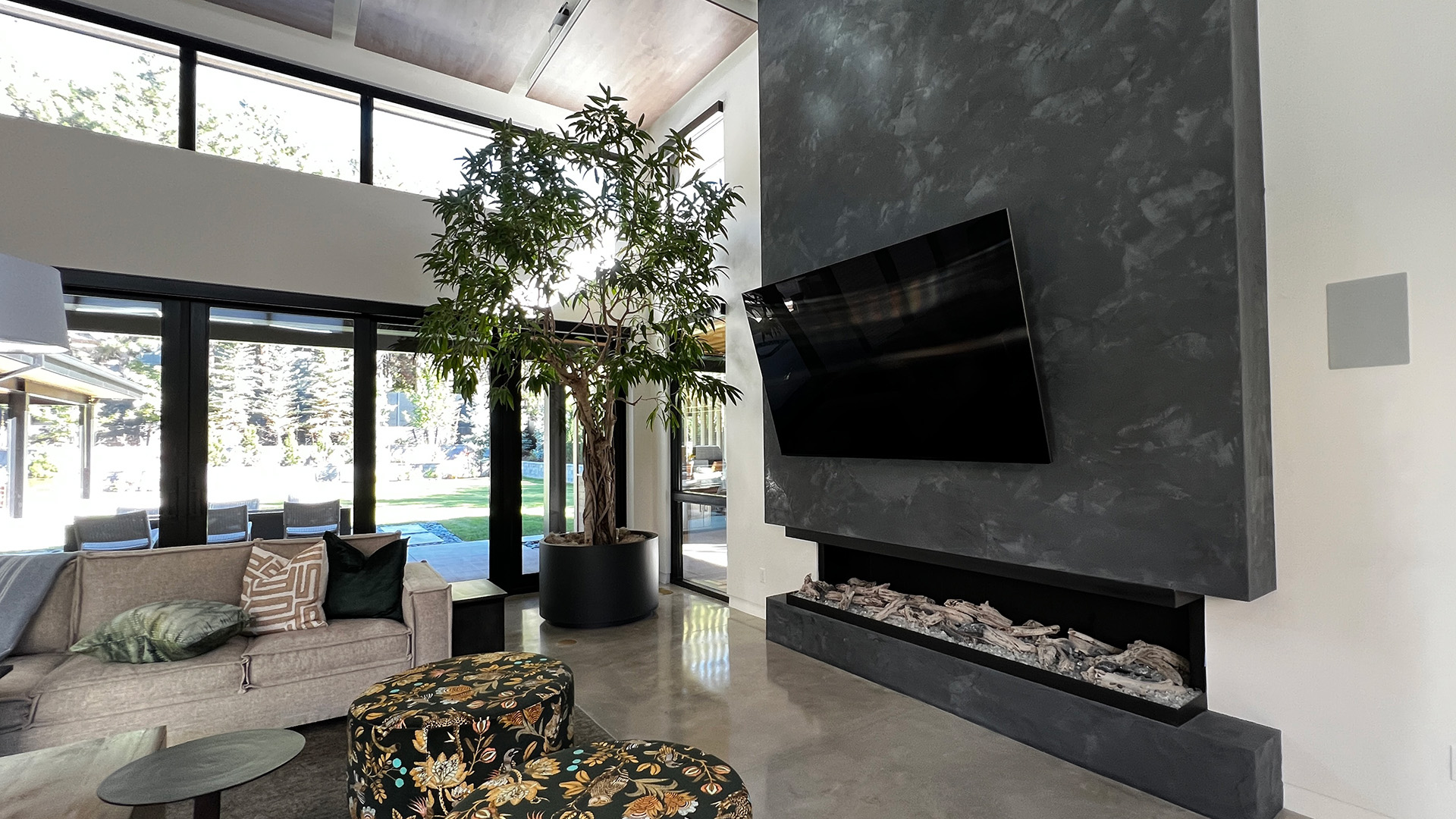
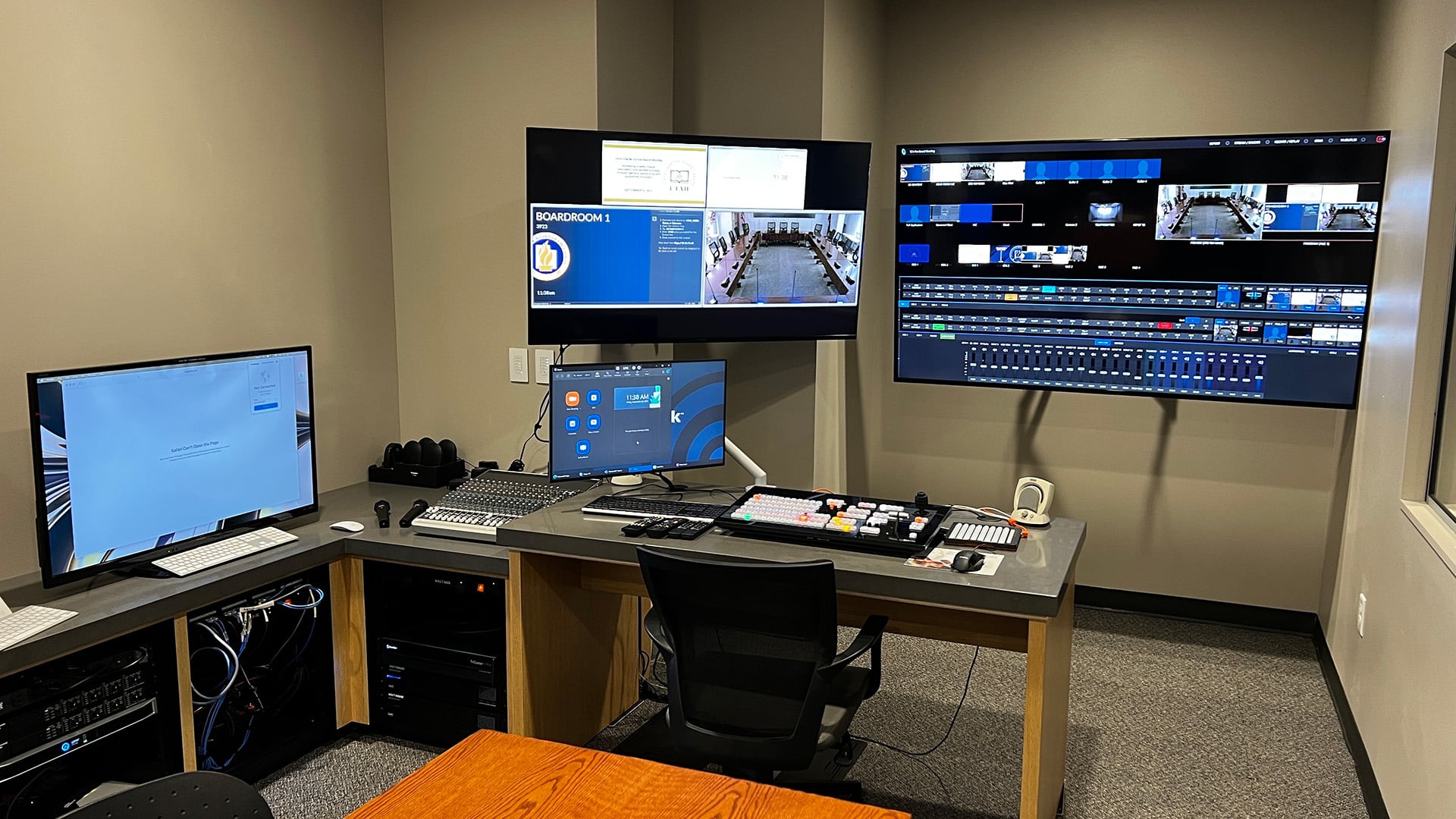
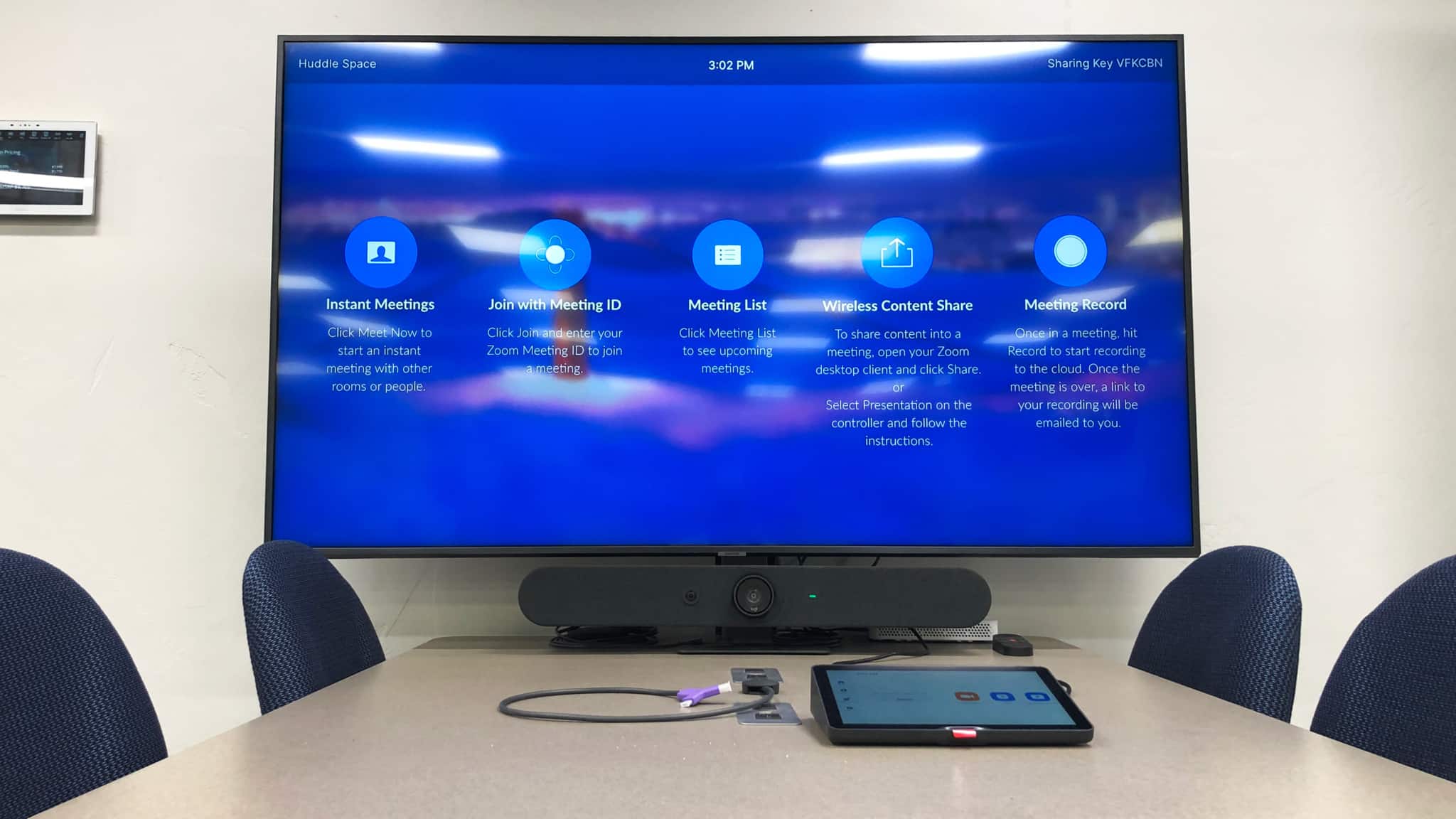
0 Comments